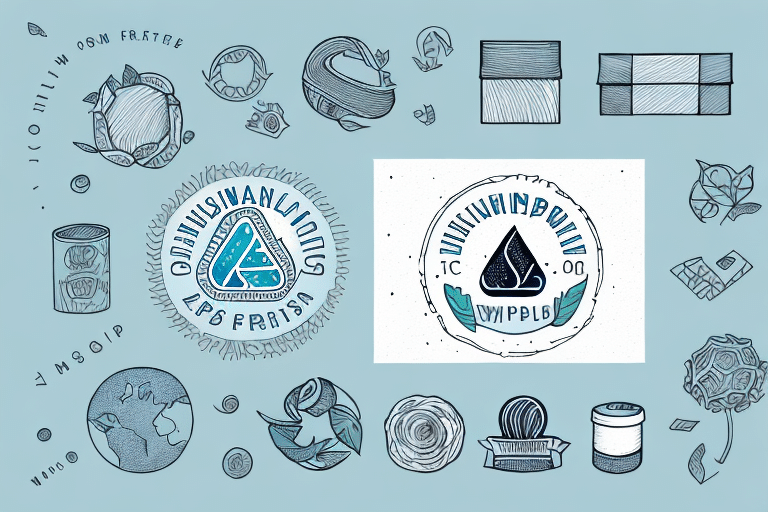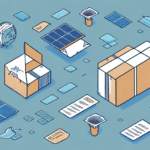Eco-Friendly Packaging Solutions for Small Businesses
In today's world, businesses bear a significant responsibility towards the environment. One impactful way to reduce your business's carbon footprint is by implementing eco-friendly packaging solutions. Small businesses, in particular, have the potential to make a substantial positive impact through sustainable practices. This article explores the benefits of eco-friendly packaging, sustainable materials suitable for small businesses, cost-effective options, and much more.
Why Businesses Should Prioritize Eco-Friendly Packaging
Reducing your business's environmental impact isn't just a moral obligation—it also makes good business sense. According to a Nielsen report, 73% of global consumers say they would definitely or probably change their consumption habits to reduce their environmental impact. Businesses that prioritize eco-friendly packaging are more likely to attract and retain these environmentally conscious customers.
Beyond marketing benefits, eco-friendly packaging can lead to reduced waste and lower energy costs in the long term. By adopting sustainable materials and processes, businesses can achieve operational efficiencies that contribute to both environmental and financial gains.
Moreover, eco-friendly packaging enhances your brand's reputation, helping you stand out in a crowded market. Demonstrating a commitment to sustainability can foster increased customer loyalty and generate positive word-of-mouth, ultimately driving sales and revenue growth.
Sustainable Packaging Materials for Small Businesses
There are numerous sustainable packaging materials available for small businesses. Some popular options include:
- Recycled Paperboard: Made from recycled paper, this material is fully recyclable and biodegradable, making it a sustainable choice for various packaging needs.
- Biodegradable Plastics: These plastics break down naturally over time, reducing landfill waste. However, it’s crucial to verify the biodegradability standards of these materials to ensure their effectiveness.
- Plant-Based Materials: Materials like bamboo, cornstarch, and mushroom-based packaging are renewable and biodegradable, offering a unique and eco-friendly touch to your packaging design.
Choosing the right material depends on your specific product requirements. For instance, perishable goods may require more durable materials, while non-perishable items can benefit from lightweight, sustainable options.
According to the Environmental Protection Agency (EPA), using recycled materials can significantly reduce the environmental impact compared to traditional packaging options.
How to Reduce Your Business's Carbon Footprint with Green Packaging
Implementing eco-friendly packaging can significantly reduce your business's carbon footprint. Here are several strategies:
- Switch to Lighter Materials: Lighter packaging reduces shipping emissions. For example, using corrugated boxes instead of heavier alternatives can lower transportation-related carbon emissions.
- Implement a Recycling Program: Encourage customers to recycle packaging by clearly labeling recyclable materials and providing recycling instructions.
- Use Recycled Materials: Incorporating recycled content in your packaging reduces the need for new resources and lowers energy consumption.
According to a study by Nature Sustainability, businesses that adopt green packaging practices can reduce their carbon emissions by up to 30%.
Additionally, using biodegradable materials ensures that packaging breaks down naturally without releasing harmful chemicals into the environment, contributing to a healthier planet.
The Benefits of Using Biodegradable Packaging for Your Small Business
Biodegradable packaging has gained popularity due to its ability to decompose naturally without harming the environment. Key benefits include:
- Environmental Impact: Biodegradable packaging reduces landfill waste and minimizes pollution, contributing to a cleaner environment.
- Renewable Resources: Many biodegradable materials are derived from renewable resources, decreasing reliance on fossil fuels.
- Enhanced Brand Image: Consumers are increasingly seeking out businesses that demonstrate a commitment to sustainability. Using biodegradable packaging can improve your brand’s reputation and appeal to environmentally conscious customers.
According to the United Nations Environment Programme (UNEP), the global market for biodegradable plastics is expected to reach USD 6.6 billion by 2027, highlighting the growing demand and potential for businesses to adopt these materials.
Cost-Effective Eco-Friendly Packaging Options for Small Businesses
Implementing eco-friendly packaging doesn't have to be prohibitively expensive. Here are some cost-effective options:
- Recycled Materials: Often cheaper than virgin materials, recycled paper and plastics can reduce packaging costs while promoting sustainability.
- Minimalist Packaging: Reducing the amount of packaging used can lead to significant cost savings. Opt for smaller boxes or eliminate unnecessary packaging components.
- Reusable Packaging: Investing in reusable containers or packaging can save money in the long run and reduce waste.
Furthermore, as demand for sustainable materials increases, economies of scale are driving down the costs, making eco-friendly packaging more accessible for small businesses.
A McKinsey report indicates that companies can reduce packaging costs by up to 20% through sustainable packaging initiatives, highlighting the financial benefits alongside environmental advantages.
Tips for Choosing the Right Eco-Friendly Packaging for Your Products
Selecting the appropriate eco-friendly packaging requires careful consideration of several factors:
- Product Requirements: Consider the size, weight, and fragility of your products to ensure the packaging provides adequate protection.
- Material Sustainability: Choose materials certified sustainable by reputable organizations, such as the Forest Stewardship Council (FSC).
- Lifecycle Analysis: Evaluate the environmental impact of the packaging throughout its lifecycle, from production to disposal.
- Cost Considerations: Balance sustainability with budget constraints to find cost-effective solutions that align with your business goals.
Additionally, engaging with suppliers who prioritize sustainable practices can help ensure that your packaging choices are both eco-friendly and effective.
How to Design Eco-Friendly Packaging That Stands Out on the Shelf
Creating eye-catching, sustainable packaging is achievable with thoughtful design strategies:
- Use Bold Colors and Unique Shapes: Distinctive designs can make your packaging memorable while maintaining sustainability.
- Incorporate Recycled Materials: Highlighting the use of recycled or biodegradable materials can attract eco-conscious consumers.
- Clear Sustainability Messaging: Communicate your commitment to sustainability through labels and messaging, educating consumers about the environmental benefits of your packaging.
Additionally, optimizing the size and weight of packaging not only reduces material usage but also minimizes shipping costs and carbon emissions. According to Packaging Digest, sustainable packaging designs that prioritize minimalism and functionality are becoming increasingly popular among consumers.
The Role of Consumer Behavior in Driving Demand for Sustainable Packaging
Consumer behavior plays a pivotal role in driving the demand for sustainable packaging. As awareness of environmental issues grows, more consumers are actively seeking out products with eco-friendly packaging options. This shift in consumer preference compels businesses to adopt sustainable practices to remain competitive.
Studies show that consumers are willing to pay a premium for products that demonstrate a commitment to sustainability. By offering eco-friendly packaging, businesses can tap into this growing market segment.
However, it's essential for businesses to go beyond merely offering sustainable packaging. Transparency in sustainability efforts and providing clear information about the environmental benefits of the packaging can enhance trust and loyalty among consumers.
How to Market Your Small Business's Commitment to Eco-Friendly Packaging
Effectively marketing your small business's commitment to eco-friendly packaging can attract and retain environmentally conscious customers. Here are some strategies:
- Highlight Specific Initiatives: Share details about the materials you use and the sustainability practices you implement. This can differentiate your business from competitors.
- Leverage Social Media: Use platforms like Instagram, Facebook, and Twitter to showcase your sustainable packaging through photos and videos. Educate your audience about the environmental benefits.
- Collaborate with Eco-Friendly Partners: Partnering with other sustainable businesses can expand your reach and reinforce your commitment to sustainability.
Additionally, obtaining certifications such as Green Business Bureau (GBB) can add credibility to your sustainability claims, making your marketing efforts more effective.
The Importance of Sustainable Supply Chain Management in Reducing Waste
Sustainability should extend beyond packaging to encompass the entire supply chain. Effective sustainable supply chain management can reduce waste, improve efficiency, and lower your business's overall environmental impact. Key practices include:
- Sourcing from Sustainable Suppliers: Partner with suppliers who prioritize sustainable practices and materials.
- Reducing Packaging Materials: Optimize packaging to use fewer materials without compromising product integrity.
- Eco-Friendly Transportation: Utilize transportation methods with lower emissions, such as electric vehicles or optimized routing.
Implementing energy-efficient equipment and processes can further reduce your carbon footprint. According to the World Bank, businesses that adopt sustainable supply chain practices can achieve up to a 15% reduction in operational costs through increased efficiency and waste reduction.
Moreover, engaging in a closed-loop system, where waste materials are reused or recycled within the company, promotes a circular economy and minimizes environmental impact.
Case Studies: Small Businesses Successfully Implementing Green Packaging Solutions
Numerous small businesses have successfully adopted eco-friendly packaging solutions, demonstrating the feasibility and benefits of sustainable practices:
Patagonia
Patagonia utilizes biodegradable bags for clothing and shoe shipments, showcasing their commitment to reducing environmental impact. Their sustainable packaging initiatives have not only minimized waste but also strengthened their brand image as an environmentally responsible company. Learn more at Patagonia's website.
Lush
Lush employs recycled materials for their product packaging, emphasizing the use of sustainable resources. Their packaging strategies have contributed to significant waste reduction and resonated with their eco-conscious customer base. Visit Lush's website for more details.
Sustainable Harvest Coffee Importers
Sustainable Harvest Coffee Importers, a small coffee shop in Portland, Oregon, uses compostable bags for their coffee beans. This practice not only reduces waste but also highlights their dedication to sustainability, attracting environmentally conscious customers.
The Midwife and the Baker
The Midwife and the Baker, a small bakery in San Francisco, transitioned to biodegradable packaging for their bread products. This change not only lowered their environmental footprint but also resulted in long-term cost savings on packaging.
Overcoming Challenges in Adopting Eco-Friendly Packaging Practices
While the benefits of eco-friendly packaging are clear, businesses may encounter several challenges when adopting these practices. Common obstacles include:
- Initial Costs: Sustainable materials can sometimes be more expensive upfront compared to traditional options.
- Sourcing Sustainable Materials: Finding reliable suppliers who offer eco-friendly materials can be challenging.
- Material Suitability: Ensuring that sustainable materials meet the functional requirements of your products is essential.
However, these challenges can be mitigated with strategic planning:
- Long-Term Savings: While the initial investment may be higher, sustainable packaging can lead to cost savings over time through reduced material usage and increased efficiency.
- Government Incentives: Leveraging government grants and incentives can help offset the costs of transitioning to eco-friendly packaging.
- Research and Collaboration: Investing time in researching sustainable materials and collaborating with suppliers can ensure that your packaging meets both environmental and functional needs.
Adopting a phased approach to transitioning can also help manage costs and operational adjustments, allowing businesses to gradually integrate sustainable practices into their operations.
Future Trends and Innovations in Sustainable Packaging for Small Businesses
The field of sustainable packaging is continuously evolving, with new innovations and trends emerging regularly. Key future trends to watch include:
- Regenerative Agricultural Practices: Utilizing materials sourced from regenerative agriculture can enhance soil health and sequester carbon, contributing to a more sustainable supply chain.
- Circular Supply Chains: Adopting circular supply chains, where materials are reused and recycled indefinitely, minimizes waste and promotes sustainability.
- Durable and Reusable Materials: Developing more durable packaging that can be reused multiple times extends the lifecycle of materials and reduces overall waste.
Innovations such as edible packaging, bio-based plastics, and smart packaging technologies are also on the horizon, offering new ways to enhance sustainability while maintaining functionality.
By staying informed about these trends and incorporating relevant innovations, small businesses can continue to lead in sustainability and meet the evolving demands of eco-conscious consumers.






















